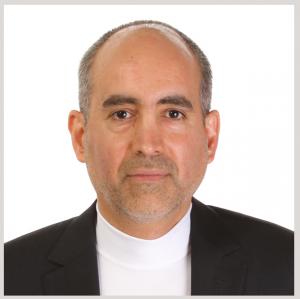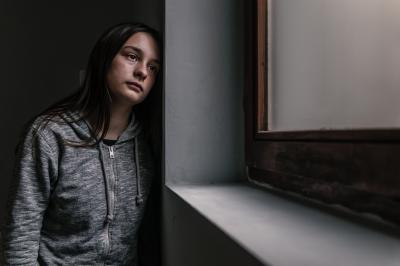In Canada, suicide ranks as the second greatest cause of mortality among teenagers and young adults. It remains the leading cause of mental health emergency care for people of all socioeconomic backgrounds across the province.
Since its launch in 2003, the International Association for Suicide Prevention (IASP) has established September 10 as World Suicide Prevention Day (WSPD), which aims to raise awareness of suicidal behaviours, risks, and protective factors and promote the development of suicide prevention measures and resources worldwide.

Investigator, BC Children's Hospital
Director of Research, Child and Adolescent Psychiatry Emergency Unit, BC Children’s Hospital
Clinical Assistant Professor, department of psychiatry, UBC
To mark the day, we spoke to BC Children’s Hospital investigator and child and adolescent psychiatrist Dr. Ali Eslami about suicide prevention and what parents or caregivers can look for if they’re worried about their children. Dr. Eslami is the director of research at the Child and Adolescent Psychiatry Emergency Unit at BC Children’s and clinical assistant professor at the department of psychiatry at the University of British Columbia. His clinical focus includes various mental health conditions including the rapid stabilization of youth in acute distress. His research uses various artificial intelligence (A.I.) techniques to identify predictors of mental health crises in at-risk youth to prevent relapse.
What are the warning signs parents and caregivers should look out for if they are worried about their children's mental health or potential suicidal ideation?
There are several indicators that a child or adolescent is experiencing a mental health crisis. These can include a sudden, severe shift in behavior or a gradual loss in overall function, such as neglecting personal hygiene and appearance. The most important factor is the inexplicable decline in function at home, with friends and in social life, or in academics and school.
For example, a 15-year-old who usually goes out with friends in the evenings might stop doing this, which may be cause for concern.
Parents need to be mindful and aware to pick up on these gradual or sudden changes. By raising awareness about adolescent suicide, and the significance of these sorts of changes, parents may be better able to recognize the indicators of mental health crises that youth might internalize or try to conceal.
A parent or caregiver understands their child better than anybody else. If a parent has a reasonable concern that their child is feeling suicidal or has suicidal thoughts, they should ask their child about it promptly using age-appropriate language.
What if the act of asking about suicide itself encourages thoughts of suicide?
Research has shown this doesn’t occur and that it is best to be upfront and not to dance around the issue.
If parents or caregivers do reasonably suspect that a child or adolescent is having suicidal thoughts, they should not delay asking about it for fear of an awkward conversation or wait until there is a “better time.”
If thoughts of suicide are not the issue, then it generally doesn’t cause too much of a problem. But if a young person is contemplating suicide, then it’s important to discover that as soon as possible so action can be taken to prevent it. A lot of time, when a youngster is having suicidal thoughts or feelings, opening the line of dialogue on that topic by parents would be such a big relief for their child or adolescent.
These conversations are difficult, but in my experience, and from what the research shows, its far better to know sooner rather than ignore or dismiss. No parent should feel the burden of managing their kids’ crisis; professional psychiatric services are available to assist.

What is your research focus in the area of childhood and adolescent mental health?
I aim to find better tools to predict which children are likely to attempt suicide. Our current tools are only accurate about half the time — which really is just a flip of a coin.
Research conducted by our team, which is supported by generous donors through the BC Children’s Hospital Foundation as well as the UBC Data Science Centre, is looking into whether social sensing — such as a phone app that gets to know someone’s routine — could help gather more accurate information. Similar to how websites can monitor online behaviour and present targeted ads, we are hoping to be able to notice life patterns and trigger an alert if an adolescent is likely experiencing an acute mental health crisis.
Identifying reliable predictive factors of suicide is the holy grail of psychiatric research. Because suicide is preventable, identifying the causes or early indicators could save many lives.
What resources are available to youth struggling with mental health? What about for their parents or caregivers?
The Kelty Mental Health Resource Centre is an excellent resource for families navigating the provincial mental health system. It identifies supports and resources, and offers guidance for parents looking for professional help to maintain their children’s well-being, no matter their age.
In 2023, the Canadian Suicide Prevention Service will introduce a three-digit suicide hotline, available in English and French via phone, text, and online chat. Network distress centres across the country will also become available to raise awareness and assist in crisis intervention.
If you are thinking about suicide or if you are worried about someone else who you think is considering suicide, you can call the distress line:
- Greater Vancouver: 604-872-3311
- Toll free – Lower Mainland and Sunshine Coast: 1-866-661-3311
- TTY: 1-866-872-0113
- BC-wide: 1-800-SUICIDE (1-800-784-2433)




